Micro futures trading allows you to enter the futures market with lower capital requirements, making it accessible for traders with smaller budgets. However, fees, margin requirements, and platform features can significantly impact your profitability. Here’s what you need to know:
- NinjaTrader: Advanced tools, customizable charts, and low intraday margins.
- Webull: Simple $1.25 per contract fee, community-driven features, and transparency.
- Plus500 Futures: Limited fee and platform details; lacks transparency.
- Optimus Futures: Flat-fee pricing, lower margins, and multiple platform options.
- AMP Futures: Ultra-low commissions and no hidden charges.
- TradeStation: Ideal for automation and backtesting, with low intraday margins.
- tastytrade: Transparent $0.75 per contract fee; beginner-friendly.
- Interactive Brokers: Tiered pricing ($0.10–$0.25 per contract) with advanced tools.
- Tradier: API-focused, but unclear fees for micro futures.
- Charles Schwab: Higher fees ($2.25 per contract) but excellent educational resources.
Key Takeaway: Choose a broker that aligns with your trading style. Active traders may prioritize low fees and fast execution (e.g., AMP Futures, Interactive Brokers), while beginners might prefer platforms with strong educational tools (e.g., Charles Schwab, tastytrade).
Quick Comparison:
| Broker | Fee (Per Micro Contract) | Margin Requirements | Key Features |
|---|---|---|---|
| NinjaTrader | Varies | Low | Advanced tools, customizable charts |
| Webull | $1.25 | Transparent | Community-driven, mobile-friendly |
| Plus500 Futures | Unclear | Unclear | Limited details |
| Optimus Futures | $0.25+ | Low | Multiple platforms, flat pricing |
| AMP Futures | Low | Low | No hidden fees, fast execution |
| TradeStation | Competitive | Low intraday | Automation, backtesting tools |
| tastytrade | $0.75 | Standard | Beginner-friendly, clear pricing |
| Interactive Brokers | $0.10–$0.25 (Tiered) | Low | Advanced tools, global access |
| Tradier | Unclear | Unclear | API-focused |
| Charles Schwab | $2.25 | Standard | Educational resources, thinkorswim |
Focus on balancing fees, platform features, and margin requirements to find the best fit for your needs.
Low Cost Regulated Futures Broker for Trading in 2024
1. NinjaTrader

NinjaTrader is a go-to platform for active and self-directed futures traders. It’s even been recognized by Investopedia as the "Best for Dedicated Futures Traders". With its powerful tools and flexible options, it’s particularly appealing to those focusing on micro futures.
Margin Requirements
NinjaTrader offers competitive intraday margin rates, giving active traders more leverage to work with.
Platform Features
The platform stands out with its customizable charting and real-time analysis, allowing traders to execute directly from their charts. In 2023, NinjaTrader introduced cloud-based mobile and web interfaces, along with a custom event-based trading tool, giving users even more flexibility. For those just starting out – or traders wanting to test strategies – there’s a simulated trading account that eliminates financial risk while learning the ropes.
These features are designed to support a wide range of trading strategies, making it a versatile choice for futures traders.
Trading Style Suitability
Thanks to its advanced charting and real-time analysis, NinjaTrader is a favorite for traders who rely on technical analysis and need quick execution. The platform also supports multiple apps and third-party add-ons, creating a highly customizable trading environment. Whether you prefer a discretionary or systematic approach, NinjaTrader has you covered. As Investopedia puts it:
"If you’re all about futures trading, NinjaTrader has the tools, flexibility, and cost-effectiveness to keep you ahead of the game".
2. Webull
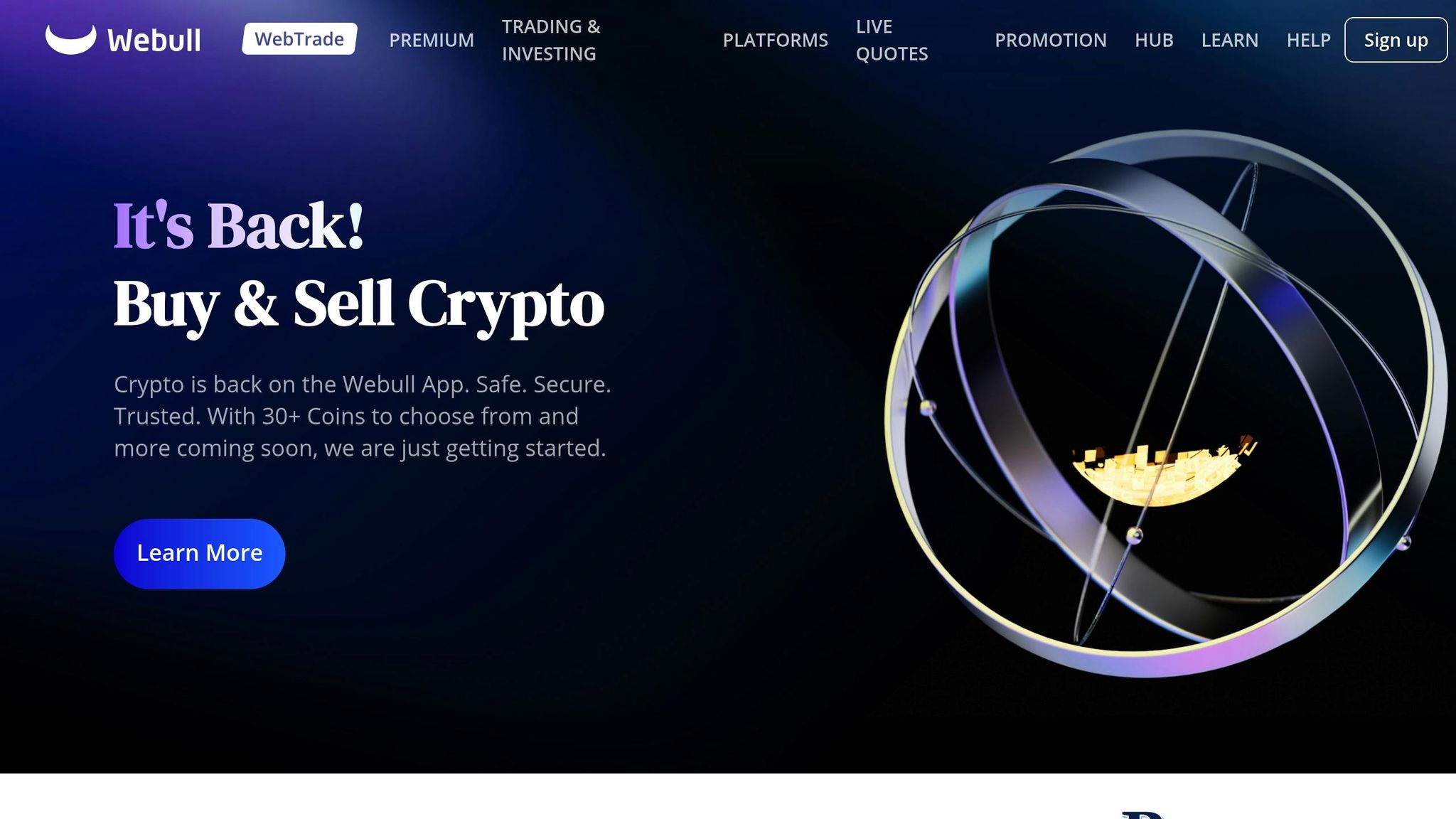
Webull stands out in the micro futures market by offering a unique twist: an integrated trader community. This feature allows users to engage in real-time chats, track trending contracts, and gauge market sentiment – a big plus for those just starting out in futures trading.
Fee Structure
Webull keeps things simple when it comes to fees. Futures trades are priced at $1.25 per contract. This straightforward pricing pairs well with the platform’s focus on user-friendly features.
Platform Features
The Webull mobile app is designed with ease of use in mind. Its order ticket clearly displays margin requirements upfront, offering transparency that’s especially useful when trading with leverage. The platform is also expanding its selection of micro futures contracts, covering a range of major asset classes like index futures, crypto, energy, metals, currencies, interest rates, and agriculture.
One feature that sets Webull apart is its community-driven approach:
"Webull brings something to the futures space that most platforms don’t: a built-in trader community. For traders who like to learn from others, follow sentiment, or crowdsource trade ideas, it’s the most interactive futures trading platform available today."
Trading Style Suitability
Webull’s clean, intuitive design makes it a great fit for traders who value simplicity and a supportive community atmosphere. However, if you’re someone who relies heavily on advanced analytics or automation tools, you might find the platform a bit limited. This balance between simplicity and functionality will be explored further in our reviews of other brokers.
3. Plus500 Futures
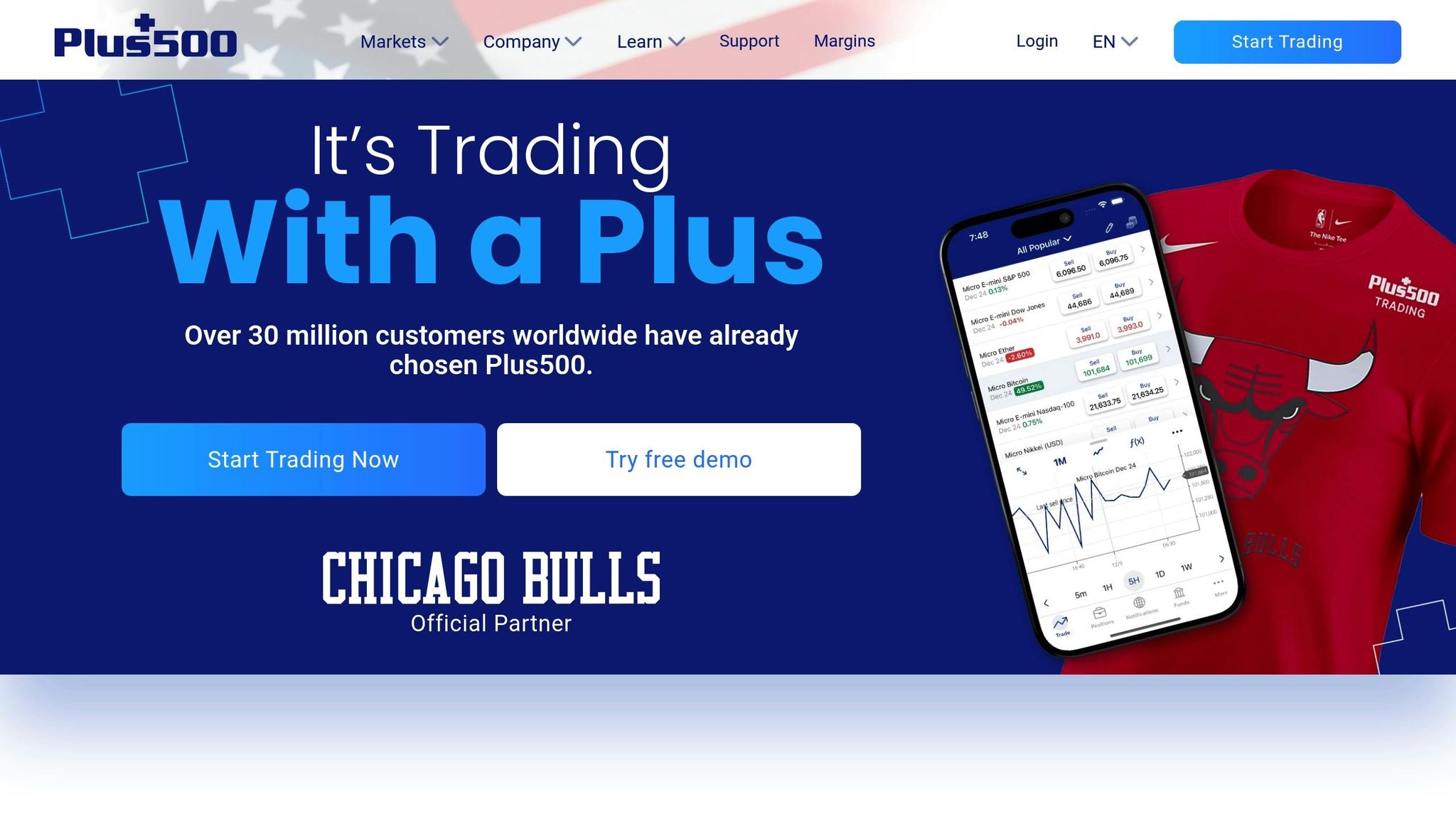
Evaluating Plus500 Futures can be tricky, mainly because the broker provides limited information about its micro futures offerings. Unlike many competitors, it doesn’t openly share details about its commission structures or platform features, making it harder for traders to make informed decisions.
Fee Structure
One of the biggest challenges with Plus500 Futures is the lack of transparency around fees. For instance, brokers like Optimus Futures charge $0.25 per side for micro contracts[^3^], while Interactive Brokers offers tiered commissions ranging from $0.10 to $0.25 per contract[^5^]. Without similar clarity from Plus500, estimating the total cost of trading becomes a guessing game. This lack of fee disclosure mirrors the overall scarcity of information about its services.
Platform Features
When it comes to platform functionality, Plus500 Futures keeps traders in the dark. There’s no information about essential features like order types, charting tools, risk management options, or mobile trading capabilities. This makes it nearly impossible to gauge whether the platform can support different trading strategies or meet the needs of active traders.
Trading Style Suitability
Given the lack of details on fees, platform features, and margin requirements, it’s tough to determine whether Plus500 Futures is a good fit for specific trading styles. Traders who prioritize low costs, quick execution, and advanced tools might find more reliable options with brokers that offer clear, upfront information about their services.
4. Optimus Futures
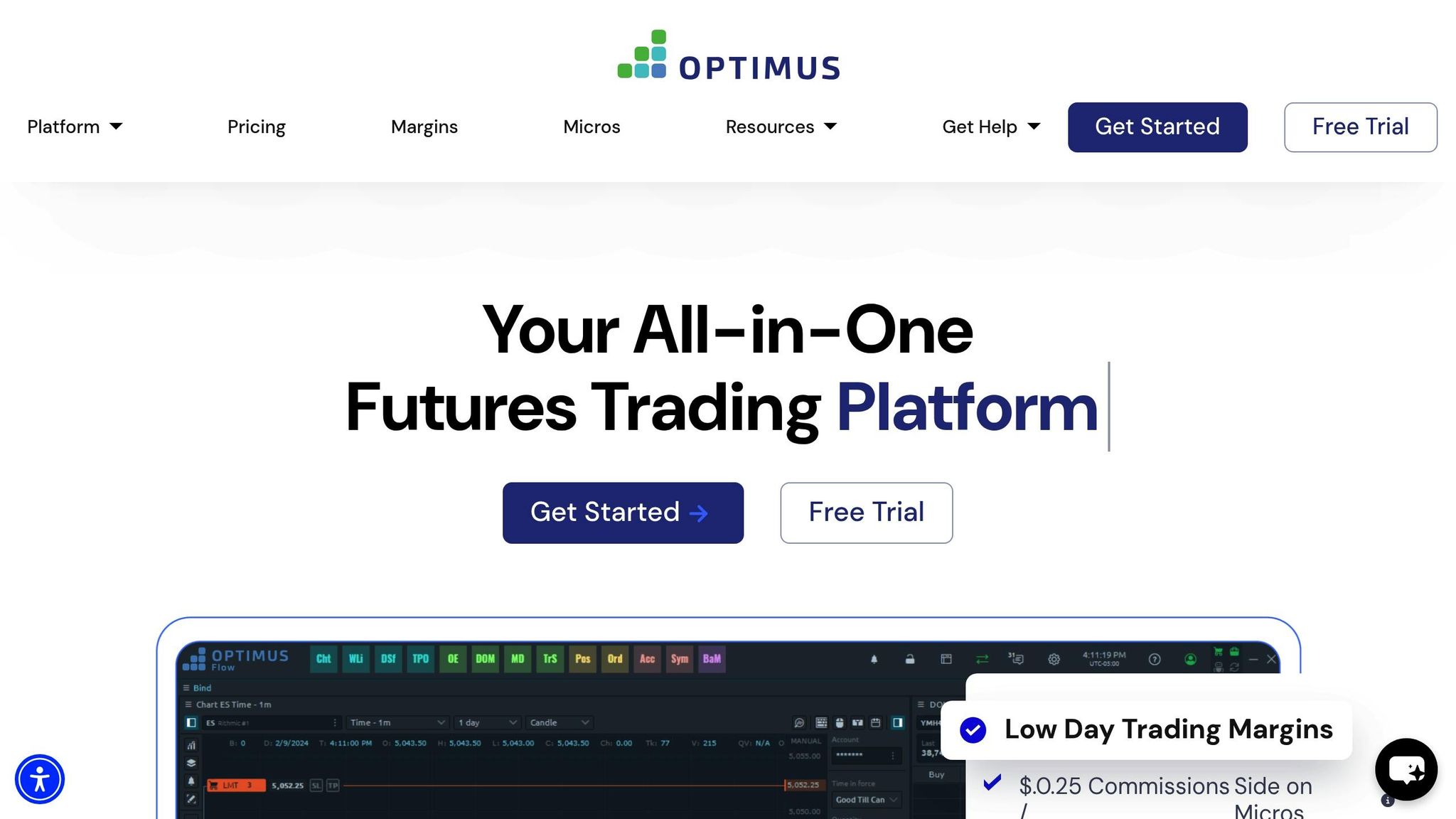
Optimus Futures stands out with its straightforward pricing and dependable order execution, making it a solid choice for micro futures traders.
Fee Structure
With a flat-fee pricing model for micro futures contracts, Optimus Futures ensures predictable costs for traders. This setup simplifies expense calculations, no matter how many contracts you trade. While the broker waives platform fees for its standard trading software, keep in mind that some premium platforms may come with a separate monthly charge. Be sure to review the software options for any potential additional costs.
Margin Requirements
Optimus Futures offers lower initial margins for micro futures, tailored for both day trades and overnight positions. This margin flexibility allows traders to maximize their buying power during trading hours while maintaining proper risk management for positions held overnight. It’s a cost-conscious approach that aligns with the broker’s overall focus on affordability.
Platform Features
The broker supports a variety of trading platforms, equipped with features like automated trading, advanced charting tools, social trading options, and a range of order types. These include standard market and limit orders, as well as more advanced options like stop-loss and bracket orders. Some setups even offer algorithmic trading capabilities, catering to traders who prefer automation.
Trading Style Suitability
Thanks to its transparent pricing and versatile platforms, Optimus Futures appeals to traders who prioritize clarity in fees. Swing and position traders will find its cost structure advantageous, while active day traders can benefit from the lower day trading margins and reliable execution speeds during market hours. For those experimenting with different trading platforms, the variety of supported software adds flexibility. However, high-frequency traders should carefully evaluate the broker’s costs to ensure it aligns with their trading strategy.
5. AMP Futures
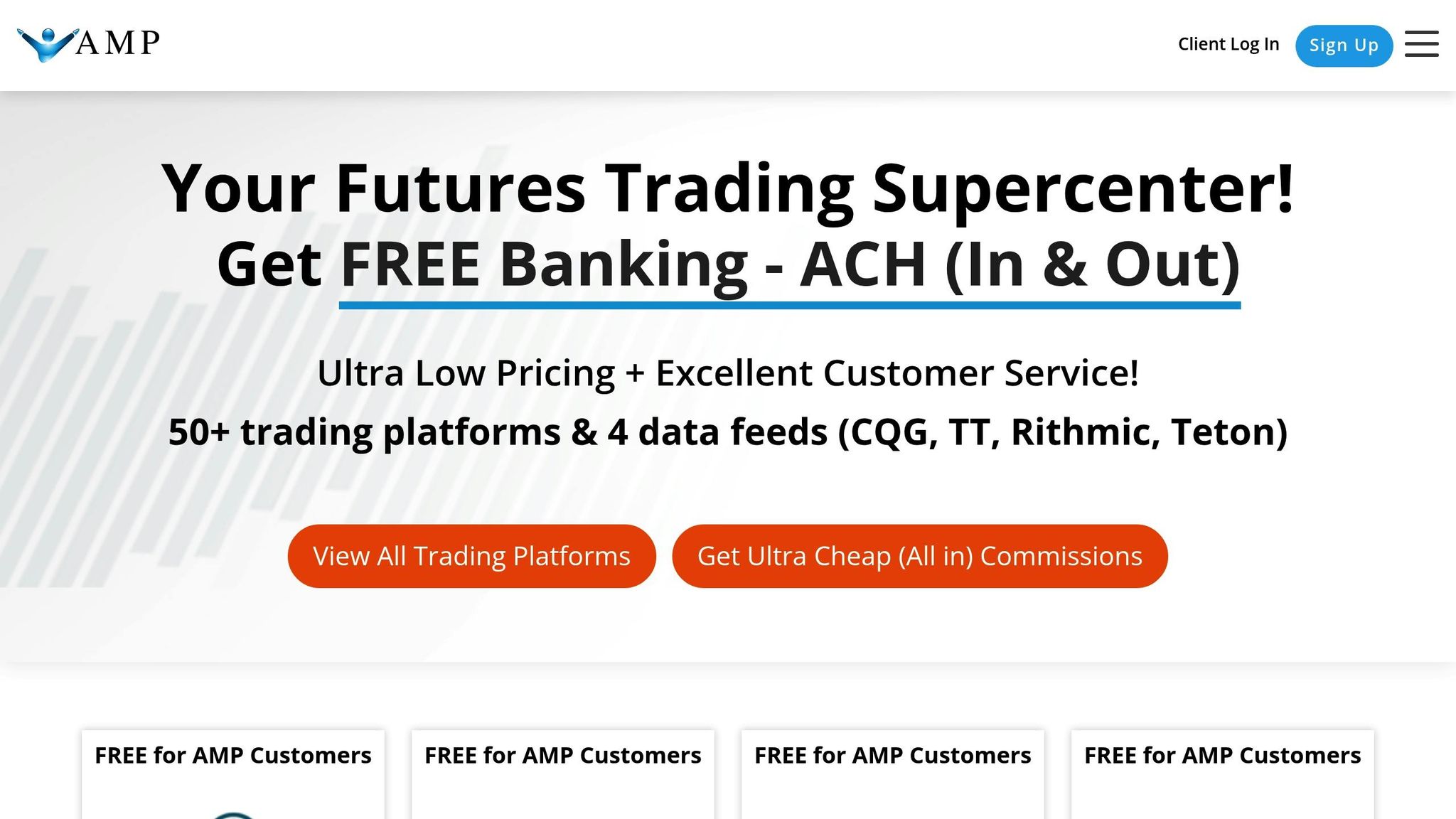
AMP Futures stands out with its ultra-low commissions for micro futures trading and a clear, fee-only commission structure. Like other brokers mentioned, it focuses on keeping costs down while offering transparent pricing, making it an appealing choice for micro futures traders.
Fee Structure
AMP Futures keeps things simple and affordable with competitive commission rates for micro futures contracts. There are no hidden platform fees or account maintenance charges to worry about. This straightforward pricing model helps traders easily calculate their trading costs upfront, which is crucial for building effective strategies.
Platform Features
Traders using AMP Futures can access a range of professional trading platforms packed with features like advanced charting tools, real-time market data, and multiple order types, including stop-loss and bracket orders. The broker also provides direct market access, ensuring quick order execution – even during fast-moving, volatile markets.
Trading Style Suitability
AMP Futures’ focus on low fees and transparency makes it a strong contender in the micro futures trading space. Frequent traders, in particular, benefit from its predictable cost structure, while the variety of platforms caters to both discretionary traders and those using systematic strategies.
6. TradeStation
TradeStation is designed with active traders in mind, offering a mix of advanced automation, analytics, and programming tools that go beyond simple order execution.
Fee Structure
TradeStation provides competitive commission rates and low intraday margin requirements, which can improve capital efficiency. This flexibility allows traders to better manage sizing and risk during the trading day compared to holding overnight positions.
Platform Features
What sets TradeStation apart isn’t just its pricing – it’s the platform itself. Packed with extensive data and powerful tools, it gives traders access to deep historical data on both U.S. and Eurex contracts. This feature is invaluable for backtesting strategies and refining trading approaches. For developers and algorithmic traders, TradeStation offers multiple APIs and scripting tools, enabling full automation across futures, equities, and options. With the ability to program trades down to the millisecond, the platform is particularly well-suited for active futures traders who demand precision.
"TradeStation is a top choice if you’re an active trader who thrives on customization and automation. As a futures trading platform, it stands out for its low intraday margin requirements, deep data coverage, and advanced developer tools that are perfect for building and testing trading systems." – StockBrokers.com
Trading Style Suitability
StockBrokers.com gives TradeStation a rating of 4.0/5.0, citing its robust web platform and wide range of products. Its advanced features make it ideal for traders who prefer systematic and customized strategies. However, the platform’s complexity might require some extra time and effort to master.
7. tastytrade
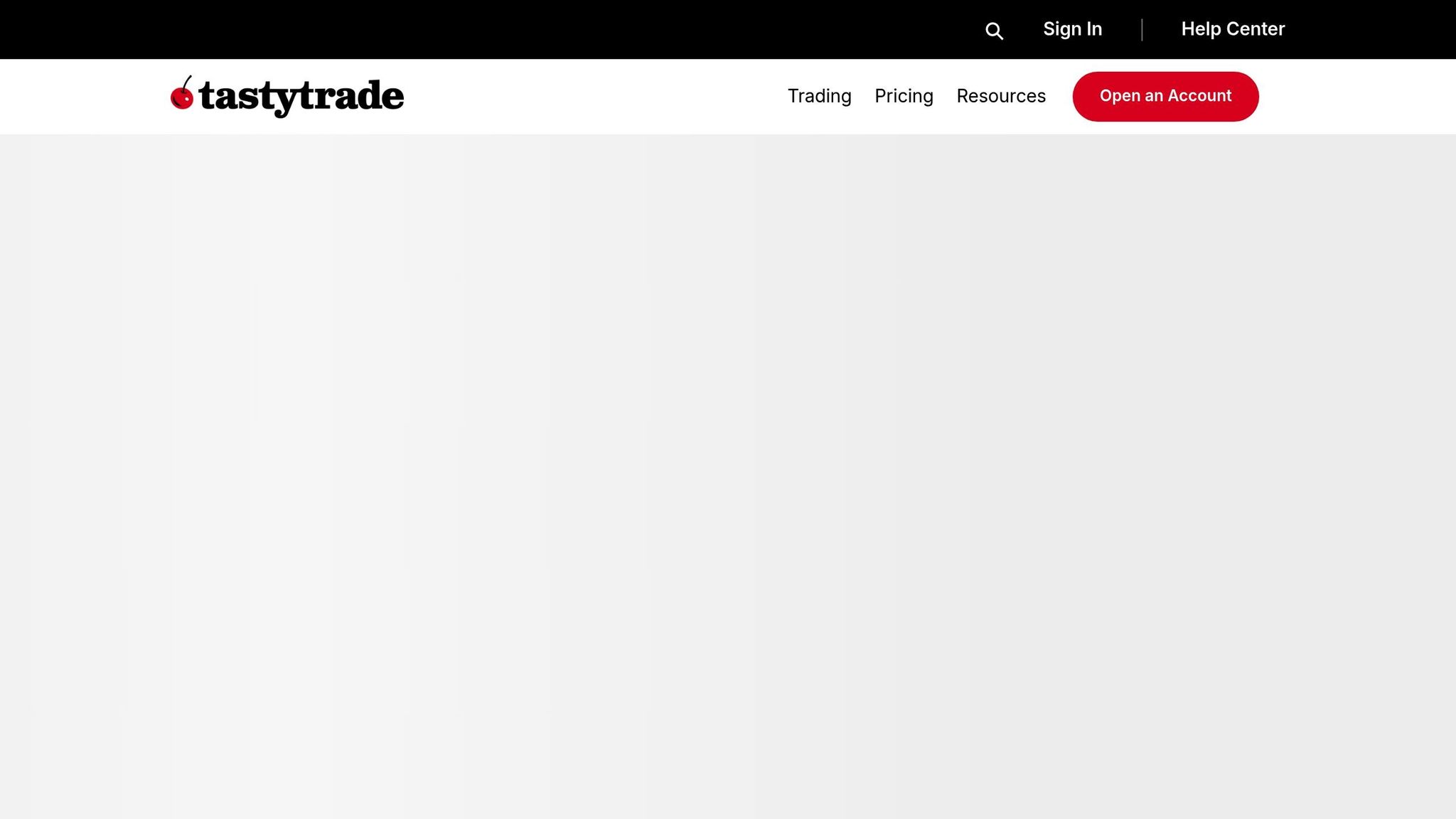
tastytrade stands out as a broker that prioritizes transparent pricing and a straightforward fee structure, appealing to traders who prefer predictable and clear costs.
Fee Structure
tastytrade keeps things simple when it comes to micro futures pricing. They charge $0.75 per contract for both opening and closing positions, and this rate also applies to options on these contracts. While traders still need to account for exchange, clearing, and regulatory fees, this flat-rate commission structure makes it easier to calculate overall expenses. The company emphasizes its commitment to clarity with phrases like "Clear Pricing, No Bull" and "transparent pricing, no matter what you trade."
Trading Style Suitability
The low $0.75 per-contract fee is particularly appealing for traders using active strategies like day trading or swing trading. Micro futures, with their smaller position sizes, pair well with this pricing model, keeping transaction costs manageable even for frequent trades. tastytrade’s approach, described as "Pricing for any trader", is designed to suit a variety of trading styles. Plus, with its membership in the NFA and regulatory oversight, the platform offers added peace of mind for active traders.
8. Interactive Brokers
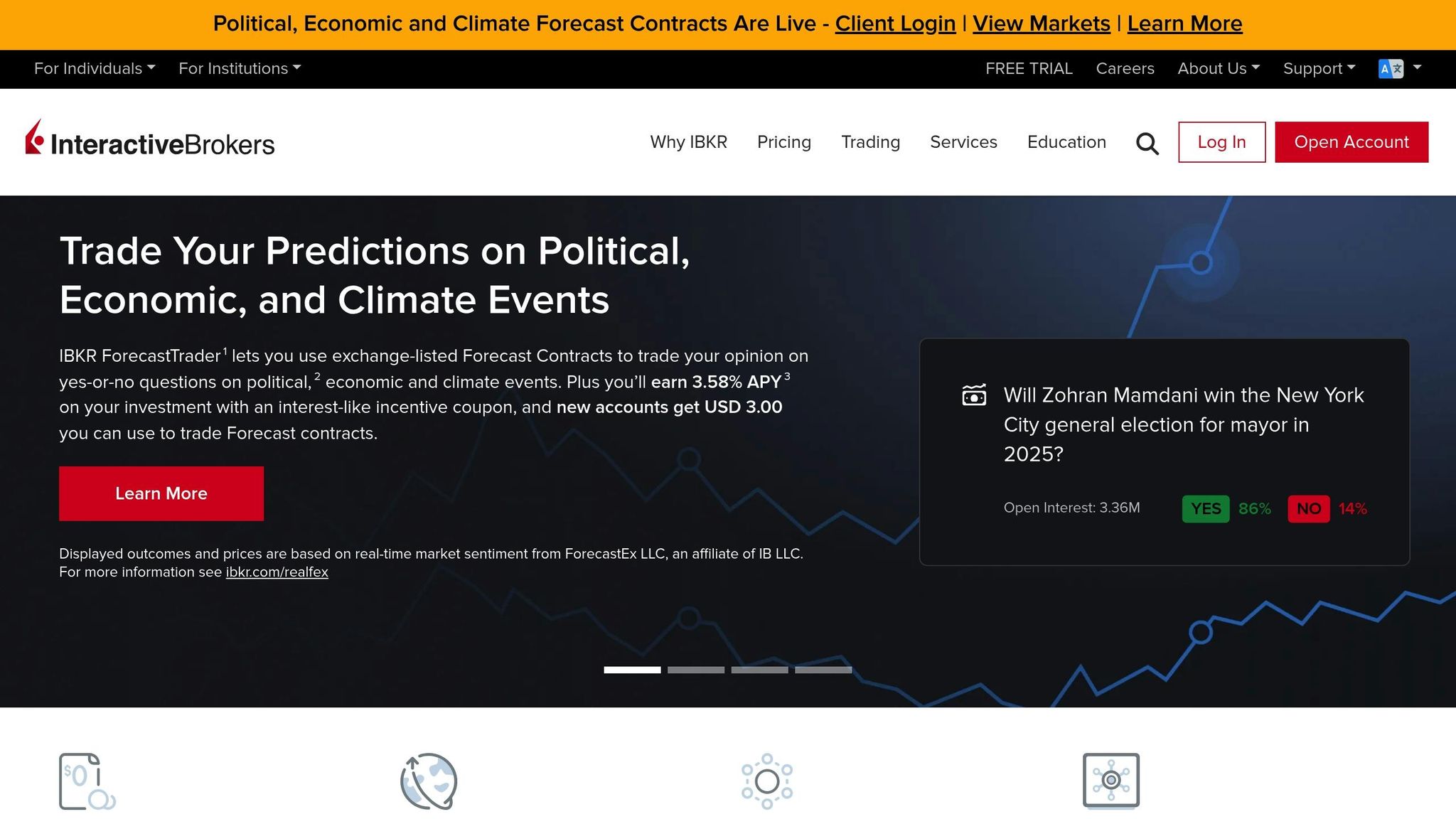
Interactive Brokers (IBKR) has earned a reputation as a top choice for professional-grade futures trading, achieving a perfect 5.0 out of 5.0 rating for its focused approach to micro futures. This platform is tailored for serious traders who rely on advanced tools and require access to global markets.
Fee Structure
Interactive Brokers offers two pricing options: a tiered commission structure ranging from $0.10 to $0.25 per contract and a fixed rate of $0.25 per contract. Both pricing models come with additional exchange and regulatory fees. For standard futures, the rate is $0.85 per contract. The tiered model is particularly appealing to high-volume traders, as it lowers per-contract costs with increased trading activity. These competitive fees align well with a platform built for precise and efficient trading.
Platform Features
The standout feature of Interactive Brokers is its Trader Workstation (TWS), a highly customizable platform packed with professional-grade tools. TWS supports micro futures contracts across various asset classes, allowing traders to fine-tune their market exposure while optimizing capital. Its advanced order types, global execution tools, and fast order routing provide an edge for experienced and strategy-focused traders.
"If you’re looking for a platform that feels like it was built with quants, analysts, and market veterans in mind, this is it." – StockBrokers.com
In addition to its technical capabilities, the platform offers access to foreign markets, making it a strong choice for traders seeking international opportunities. To complement its tools, Interactive Brokers also provides educational resources to help users deepen their understanding of complex strategies and market trends.
Trading Style Suitability
Interactive Brokers is designed for traders who emphasize strategy and precision. Jessica Inskip, Director of Investor Research at StockBrokers.com, highlights this:
"If you’re trading futures with a strategy-first mindset, Interactive Brokers (IBKR) is the platform I recommend most."
Its extensive customization options and advanced analytics cater to quantitative traders, analysts, and seasoned market professionals who demand accuracy and comprehensive market insights. The tiered pricing model is particularly advantageous for active traders looking to save on costs, while the fixed-rate option offers consistency for those trading less frequently.
9. Tradier
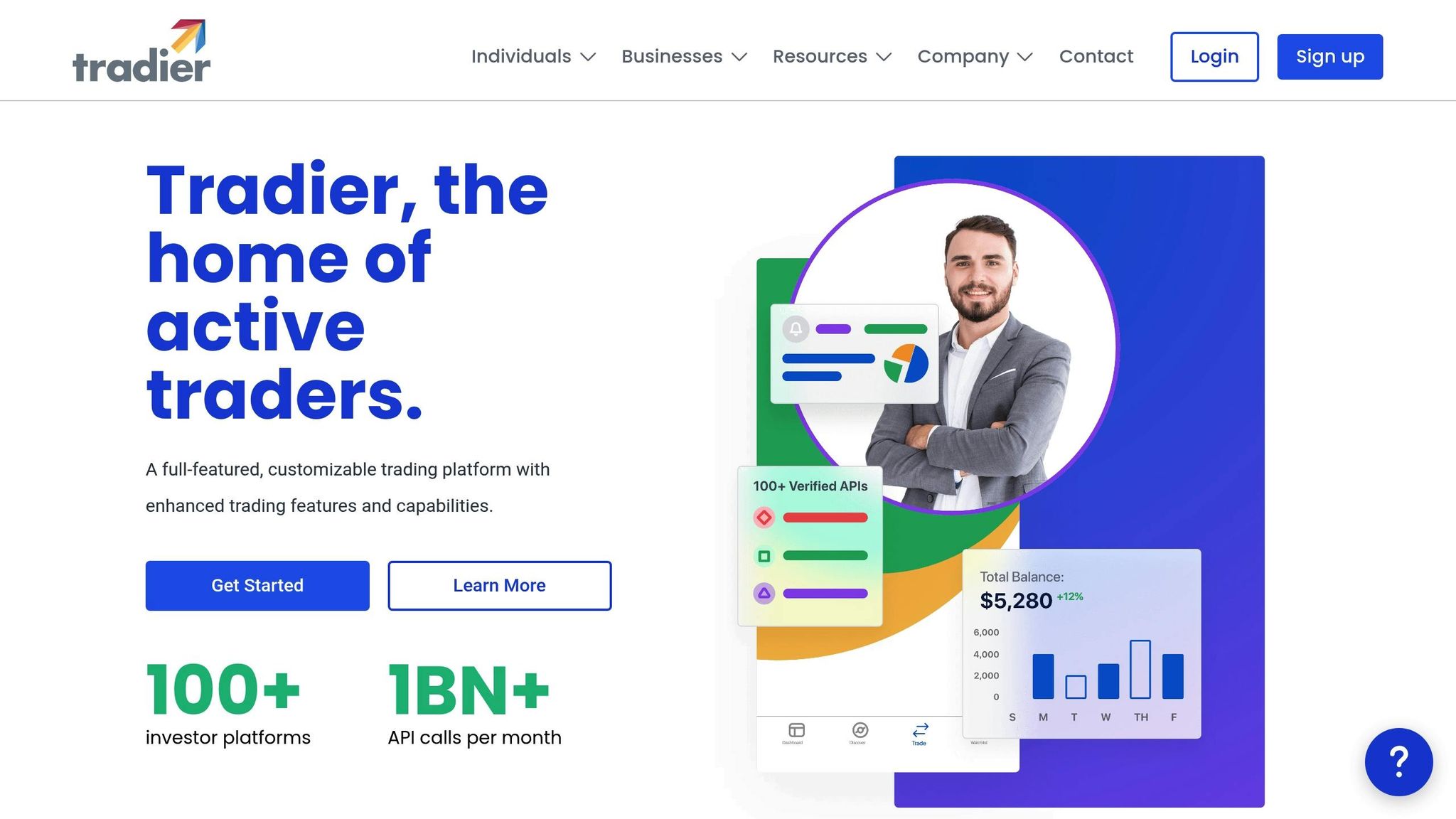
Tradier is primarily recognized for its equity and options trading services. However, when it comes to micro futures, the platform provides limited information, leaving traders uncertain about its suitability for these instruments. This lack of clarity, particularly in its fee structure, warrants a closer look.
Fee Structure
One major drawback for those interested in micro futures trading on Tradier is the absence of detailed fee information. While Tradier is transparent about its equity commission rates, it doesn’t extend the same clarity to micro futures. Key details like per-contract fees or additional costs are not readily available. Traders may need to reach out directly to Tradier for the most up-to-date fee specifics.
Platform Features
Tradier’s platform is built around an API-first model, which allows integration with various third-party trading tools and custom applications. It provides access to real-time market data and supports multiple order types. However, the platform does not document any tools or features specifically tailored for micro futures trading, which could be a limitation for some traders.
Trading Style Suitability
Tradier is best suited for traders who prioritize API integration and enjoy leveraging third-party tools to customize their trading experience. This approach, however, may not appeal to those seeking a platform with robust, built-in tools specifically designed for micro futures. For traders considering Tradier, it’s essential to determine if its API-driven design and overall capabilities align with their trading strategies and technical needs.
10. Charles Schwab
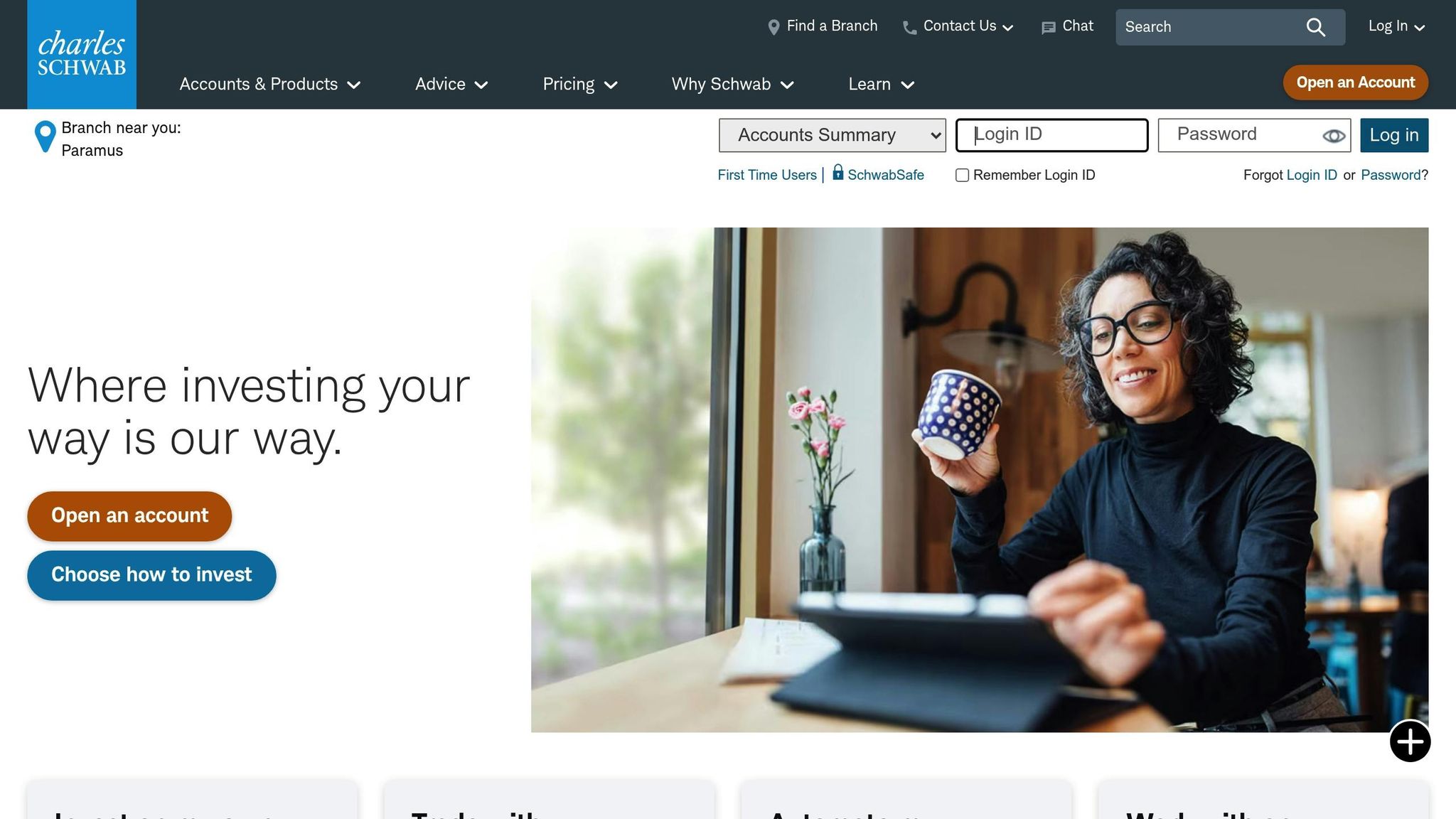
Charles Schwab provides access to micro futures trading through Charles Schwab Futures and Forex LLC. However, its fees are on the higher side. The platform charges $2.25 per micro futures contract, applied to both the opening and closing of a trade. This means the total round-trip cost for one contract is $4.50. For traders handling multiple contracts or trading frequently, these fees can quickly add up. For example, opening and closing 10 micro futures contracts would result in $45 in commissions. Such costs can have a noticeable impact on overall profitability, particularly for active traders.
Platform Features
Micro futures trading on Charles Schwab is offered through "Schwab Trading Powered by Ameritrade™", which incorporates the highly regarded thinkorswim® platforms. The platform supports options trading on several popular micro futures contracts, including:
- Micro E-mini S&P 500 (/MES)
- Micro E-mini Nasdaq-100 (/MNQ)
- Micro Gold (/MGC)
- Micro WTI Crude Oil (/MCL)
- Micro Natural Gas (/MNG)
One of Schwab’s standout features is its robust collection of educational materials. These include detailed articles and videos on topics like "What is a Micro E-mini Future?", "Evaluating Tick Sizes in Index Futures", and "Micro E-minis for Earnings Season". This makes it an appealing choice for traders looking to deepen their understanding of micro futures.
Trading Style Suitability
Given its fee structure and platform offerings, Schwab is best suited for traders who prioritize learning and research over high-frequency trading. Beginners, in particular, may find value in the lower cost of entry and reduced margin requirements associated with micro futures, combined with the platform’s extensive educational resources. However, the higher per-contract fees make it less attractive for traders focused on minimizing costs or executing a large number of trades.
For those considering Schwab, it’s important to balance the benefits of its educational tools and institutional reputation against the higher fees, especially if frequent trading or large volumes are part of your strategy.
Broker Advantages and Disadvantages
Micro futures brokers come with their own set of strengths and weaknesses, making them suitable for different trading styles. Below is a closer look at some of the key factors to consider when choosing the right broker for your needs.
Fee Structures: Brokers vary widely in their pricing. Some offer highly competitive commissions, which can be a great fit for active traders. However, others may rack up costs quickly, especially if your trading strategy involves frequent transactions. It’s important to weigh the fees against how often you trade.
Platform Features: The level of sophistication in trading platforms can differ significantly. Some brokers provide advanced tools like detailed charting, technical analysis, and customizable interfaces. Others keep it simple, offering basic functionality at a lower cost. Deciding what features you’ll actually use can help you avoid overpaying for unnecessary extras.
Margin Requirements: Lower margin requirements can make your capital go further, allowing for more trades with less upfront investment. However, this also increases your risk exposure. On the other hand, brokers with higher margin requirements might act as a built-in safeguard against over-leveraging.
Additional Considerations: Beyond fees and platforms, other factors like educational resources, customer support, and technological reliability play a big role. For newer traders, quality educational materials can be a huge help in building confidence and skills. During periods of market volatility, responsive customer service and stable technology become critical. Regulatory compliance is another aspect worth verifying to ensure your funds are secure.
Ultimately, the best broker for you depends on your trading habits and goals. If you trade occasionally, you may prioritize features like educational tools and strong customer support. On the flip side, active traders often focus on low fees and fast execution. By balancing these factors, you can find a broker that aligns with your micro futures trading needs.
Conclusion
Selecting the right micro futures broker means aligning your trading approach with the broker’s fees, platform features, and overall offerings. If you’re an active trader, brokers with low per-contract fees might be your best bet. On the other hand, less frequent traders may prioritize brokers that provide user-friendly platforms and strong educational resources. Additionally, keep an eye on how margin requirements and trading technology can impact your overall profitability.
While fees are important, don’t overlook other key factors like margin levels and execution technology. For instance, Interactive Brokers is ideal for high-frequency trading, TradeStation shines in automation and backtesting, and tastytrade stands out for its educational tools. Optimus Futures offers attractive volume discounts, with day trading margins starting as low as $50 and commission rates dropping to $0.05 per side for high-volume traders.
Margin requirements are another critical consideration. Lower margins can make trading more accessible by reducing the upfront investment, but they also increase your exposure to market swings. Be sure to weigh these risks against your available capital and risk tolerance.
The technology backing your trades is equally essential, especially for strategies that rely on precise timing. Pairing your broker with a service like QuantVPS – offering ultra-low latency hosting for platforms like NinjaTrader, MetaTrader, and TradeStation – can significantly enhance execution speed, with response times as quick as 0–1 ms and a 100% uptime guarantee.
Finally, test the broker’s platform under various market conditions to ensure it performs reliably when it matters most. A winning combination of competitive fees, advanced technology, and dependable execution can make all the difference in your micro futures trading journey.
FAQs
How can I choose the right micro futures broker for my trading needs?
When selecting a micro futures broker, there are a few critical things to keep in mind. Start with fees and commissions – choosing a broker with competitive rates can significantly lower your trading expenses. Every dollar saved here adds up over time, especially for active traders.
Next, take a close look at the broker’s platform features. Does it offer the tools you need, like advanced charting, diverse order types, and an interface that’s easy to navigate? A platform that aligns with your trading habits can make a world of difference.
It’s also important to assess the variety of micro futures contracts available. Whether you’re interested in indices, commodities, or currencies, you’ll want a broker that supports the specific markets you plan to trade.
Don’t overlook margin requirements either. Knowing how much capital you’ll need to keep your positions open is essential for efficient trading, especially if you’re managing a smaller account.
For those just starting out, brokers with strong educational resources can be a game-changer. Look for tutorials, webinars, or guides that can help you understand the ins and outs of futures trading while building your confidence.
What should I look for when comparing fees charged by micro futures brokers?
When comparing fees among micro futures brokers, start by looking at the commission per contract – this is a key factor in determining your costs. But don’t stop there. Other fees, like clearing, exchange, and regulatory charges, can stack up and significantly affect your bottom line.
Some brokers might offer tiered pricing that lowers costs for traders with higher volumes. If you’re a frequent trader, this could be worth exploring. Take the time to examine the entire fee structure to ensure it matches your trading habits and strategies. Every detail counts when it comes to managing costs effectively.
Why should you consider platform features and margin requirements when choosing a micro futures broker?
When choosing a micro futures broker, take a close look at their platform features and margin requirements to make sure they fit your trading style and goals. Features like advanced charting tools, fast order execution, and an intuitive user interface can make a big difference in how smoothly and effectively you trade.
At the same time, understanding the broker’s margin requirements is key. These requirements dictate how much capital you’ll need to open and maintain your positions. This becomes particularly important when managing risk and fine-tuning your investment strategy for micro futures contracts.
Weighing these elements carefully will help you find a broker that aligns with your objectives while keeping both costs and risks under control.








